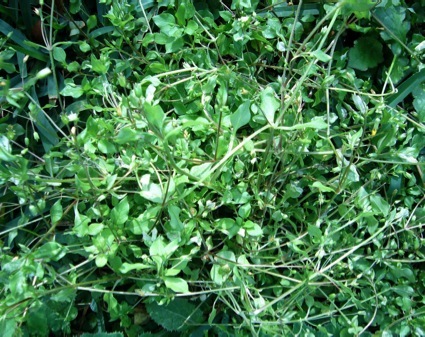
Temporary winter visitor, chickweed, photo by Sheltering Woods
We had classes this weekend in Tampa and Orlando discovering most of the winter edibles one would expect. One interesting find was chickweed. Almost virtually here today and gone tomorrow, this short-lived greenery is held in high esteem by many foragers. In Orlando Sunday it was prime for harvesting. In Gainesville last week it was just past season. Chickweed can be eaten raw or cooked. Raw it has the flavor of uncooked corn. Personally I prefer it cooked. The only real problem with chickweed, at least locally, is its extremely short season. One usually sees it around Christmas if not early January. Four to six weeks later it’s gone. You have to plan ahead with chickweed. Know what you are going to do with it the first time you see it. If you wait even a few days your favorite patch might be harvested by someone else or our of season. To read more about the fleeting chickweed go here. We also talked a lot about the Florida Tasselflower, a tasty toxic plant you should not eat. To learn why, click here.
I’d also like to thank Bill for showing the Tampa class his new solar oven and new nut sheller. In just a few minutes while talking about it the oven it heated up to over 200 degrees F. They are well-engineered now and quite efficient. I use my solar oven at least once a week. It’s kind of like crock pot cooking with a twist. It’s actually quicker than a crock pot, and moist. Mine is a long rectangular one that can take two pots. Bill’s is high-tech and square. After seeing his I might get one when mine is worn out. To read more about them go here. I have a You Tube video about it here. Bill also demonstrated his new nut sheller. They are made by a family business and will save a lot of time next acorn season. It made short work of some walnuts Bill had for demonstration.The hopper feeds the shelled nuts towards a gap that you adjust by a series of washers. By moving the crank back and forth the indentations catch some of the nuts and crack the shells dropping the cracked ones out the bottom. The most time-consuming and tedious task regarding acorns is shelling them. Centuries ago children were used for the tiny task. Little hands, little rocks for pounding. A nut sheller turns hours of work into minutes.
Also during the Tampa class I managed to get stung by a tiny stinging nettle only a couple of inches high. That sting will bother me for nearly a week. That being the case let’s talk about it.
The Sting: Two local edible plants, with edible relatives found around the world, sting: Urtica chamaedryoides and Cnidoscolus stimulosus.
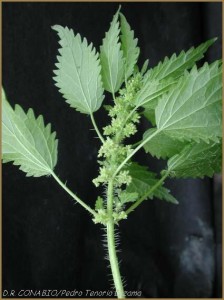
Urtica chamaedryoides, photo by Pedro Tenorio Lezama
Urtica chamaedryoides means burning dwarf and it is well-named. It stings like a big angry wasp, spikingly intense, hurts immensely and intensely for hours and the spot is very sensitive for days to hot or cold water. Not pleasant. I sat in a patch of them once while making a video… They are also happily growing this time of year locally. I think they are a bit over-rated as a green but many folks say they adore them with pesto being the most often made item from them. The Urtica will be around for another month or so and have been mentioned in previous newsletters. To read about them go here.
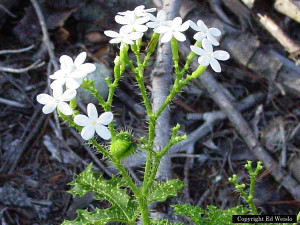
Cnidoscolus stimulosus, photo by Ed Weislo
The sting of the Cnidoscolus stimulosus, or spurge nettle, is more like a sun burn than a sting. The area it touches gets hot for about an hour, not unbearably so, and then it goes away. If there is a saving grace to its sting, in comparison, it is that the sting isn’t too bad and goes away rather quickly. The Urticas are seasonal, the spurge nettle is nearly year-round. It is not quite the problem plant that the Urticas are, but that is a matter of debate and opinion.
A young mother wrote to me asking how to get rid of the spurge nettle. She said she had a couple of acres and the plants were all over the place, bothering her children and her dog. I wrote back and said “lucky you. The roots are quite delicious, eat them.” She wrote back saying that I just did not understand her. She wasn’t interested in eating them; She wants to get rid of them. I replied that I had two good students living very near her who would love to visit her property on a regular basis and dig them up. I added that she could mow the area constantly and in a few years the roots will become exhausted and the plants will die off.
The exchange led me to wonder was missing? Or better still, what is, as they used to say, the operant factor? That factor is for most people food comes from a store. Said another way food just does not come out of the ground in your suburban back yard. Even gardeners are viewed as a throwback and a tad strange. Here is someone who has a replenishing pantry of a staple crop that must be gotten rid of. Those spurge nettle roots easily could represent hundreds of pounds of wholesome, tasty, starch-based food most of the year that does not have to be purchased or stored. Perhaps it is time to consider a different approach: Train the dog and kids to stay away from the plants, kind of have your plants and eat them, too? To read about the spurge nettle go here.
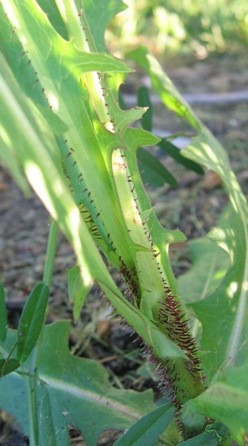
Prickly Lettuce, photo by RobsPlants
Prickly not stingy: While on the topic of spines and the like the Prickly Lettuce is also coming into season. It isn’t seen too often in central Florida but I found it on disturbed ground in the northern area of the state. Like most wild lettuce it is bitter but it has a distinct identification characteristic that makes it an easy forage-able. Like most lettuce it has a triangle-shaped leaf midrib and white sap. It also has on the back of the leaf midrib a single line of hair. However, on the Prickly Lettuce the line of hair is not wispy and fine but stiff and resistant, very easy to see and identify. Unlike rib hair on other lettuces this is a row of prickles and easily felt with by your fingers. The species grows rather rank and tall and has two different names. Of course we want to pick it when it is young and tender. To read a little more about the Prickly Lettuce, click here.
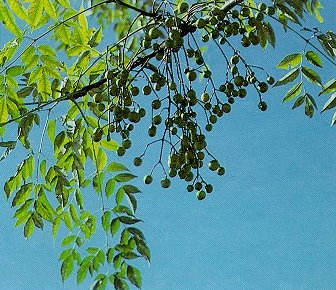
Toxic Chinaberry Tree, photo by West Virginia Uni.
A close friend had to remove two trees from his elderly mother-in-law’s yard. She had just bought the house and was moving thus there were a lot of tax-payer supported busy bodies running around. Both of the trees are on the state’s hit list as invasive species. They are illegal to possess or transport. So, being a good citizen and dutiful son-in-law he cut them down and disposed of the trees. However after he cut them down the city told him he was subject to a $300 fine because he did not have a permit to cut the trees down. After the sawdust settled the city agreed to sell him an after-the-fact permit to cut down the banned trees but with a warning to get a permit in the future. While it was uncharacteristically reasonable of the city not be extreme about the issue it illustrates how fractured and irrational government can be. One entity insists action be taken and another penalizes you for taking that action. Why people always want to expand government and give it more power is beyond my comprehension. Code Enforcement Boards (and homeowner associations) can make your life quite miserable.
My foraging colleague Feral Kevin has published an ebook called a “Crash Course in Wild Mushroom Foraging.” As an activity collecting mushrooms is both praised and condemned, adored and avoided. One can appreciate that regardless of ones position on mushroom foraging information has to be accurate and students have to be careful. Feral Kevin, based in California (where the majority of mushroom poisonings occur) has taken the novel approach of excluding all gilled mushrooms from his book. That leaves a lot of distinct fungi generally considered identifiable and safe. It’s a small book full of colorful mushroom characters and promise. (No, I don’t get a cut for promoting it. I own the book and I like it.) The reason why there are more mushroom poisonings in California is an immigrant population who don’t know a deadly west coast mushroom looks like an edible one back home. His book takes an interesting approach and is a handy addition to ones collection. To read more about Kevin’s book and or to order go here.
Don’t forget the The Florida Herbal Conference this weekend. There’s still time to sign up. For more information go to: Florida Herbal Conference.
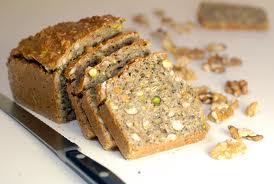
Seven Grain Bread, photo by the Sister Project
The Maslin Technique. When one does a Google search you expect to find thousands, if not millions of hits. Thus when I read of the “Maslin Technique” while I was doing some research I looked it up. Well… I tried. Here’s the sentence the phrase was in: Archaeologists believe that seed plants may have been cultivated by collecting the seeds and using the maslin technique… An advance search looking for “maslin technique” produces only two hits, one a French marketing site, and the site I originally visited. Not too enlightening. That required researching the word Maslin, which is English or more specifically British. It means a mixture of different grains, flours, or meal especially rye with wheat. It also means a bread made from such a mixture of grains. Maslin (MAZ-lin) is from the Middle English Mastlyoun, a medley. That came from the Middle French mesteillon which was from mesteil a mixture from the vulgar Dead Latin mixtilium. Here’s the rest of the paragraph: that is to say, by storing the seeds and mixing them together before broadcasting them onto a suitable patch of ground, such as a floodplain terrace. Maygrass and little barley ripen in spring; chenopodium and knotweed ripen in fall. By mixing these seeds together and sprinkling them on fertile ground, the farmer would have a patch where seeds could reliably be harvested for three seasons. The “domestication” would have occurred when the cultivators began selecting the chenopodium seeds with the thinnest seed covers to save and replant.
They think native farmers would store the seeds of various edible weeds and in the spring mix them then sow them on the same land. As the weeds came up in different times and seasons that meant they could get several crops in spring, summer and fall off the same plot of land with only one sowing. Rather cleaver and not a bad idea if you are thinking about throwing around some weed seeds.
Newly added articles: Ragweed.
Upcoming classes: My schedule appears light this month because I’m teaching at conferences.
Saturday, Feb. 16th, Lake Woodruff National Wildlife Refuge, 2045 Mud Lake Road, DeLeon Springs, FL . 32706, 10 a.m.
Sunday, February 24th, Florida State College, south campus, 11901 Beach Blvd., Jacksonville, FL, 32246. 9 a.m.
Saturday, March 2nd, Spruce Creek Park, 6250 Ridgewood Ave. Port Orange, Fl, 32127. 9 a.m.
Sunday, March 3rd, Wickham Park: 2500 Parkway Drive, Melbourne, FL 32935-2335, 9 a.m.
Saturday, March 9th, Bayshore Live Oak Park, 23157 Bayshore Rd., Port Charlotte, FL 33980, 9 a.m.
Sunday, March 10th, Dreher Park, 1310 Southern Blvd., West Palm Beach, FL., 33405, 9 a.m.
Saturday, March 30th, Boulware Springs Park, 7902 S. E. 15th St., Gainesville, 32601, 9 a.m.
Sunday, March 31st, Jervey Gantt Recreation Complex, 2390 SE 36th Ave., Ocala, FL, 34471, 9 a.m.
Saturday, April 6th, Colby-Alderman Park, 1099 Massachusetts Street, Cassadaga. Fla. 32706. 1 p.m.
Saturday, April 13th, Bayshore Live Oak Park, 23157 Bayshore Rd., Port Charlotte, FL 33980, 9 a.m.
Sunday, April 14th, Dreher Park, 1310 Southern Blvd., West Palm Beach, FL., 33405, 9 a.m.
Note the starting times vary. For more information on my February classes go to my main website and click on classes.
And for what it’s worth it’s the classic environmental nightmare. Human behavior is changing an ecosystem and as a consequence an indigenous species is threatened. In fact perhaps as much as 80% of where this species lives has been eliminated. Yet there is no outrage, no protests, no plan to raise taxes to pay for the impact. Threatened with loss of habitat is Pthirus pubis, public lice or the crab louse aka The Crabs. It lives on hair throughout the body but prefers one particular warm, moist, location. More so humans are the only host for these little blood suckers. In a number of places in the world the crab louse is finding less places to live. Bikini or Brazilian waxes and other practices means 80 percent of prime louse real estate — the groins of college students — has been eliminated. In Australia there hasn’t been an infestation reported in women since 2008.
“Pubic grooming has led to a severe depletion of crab louse populations,” said entomologist Ian F. Burgess, of Insect Research & Development Ltd. “Add to that other aspects of body hair depilation, and you can see an environmental disaster in the making for this species.”
This does point out, however, how human behavior can impact an organism that’s been around for a long time. It also shows how selective protests can be.
To donate to the Green Deane Newsletter click here.

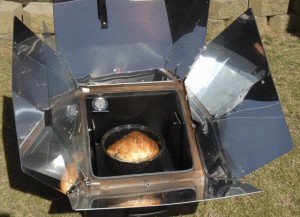

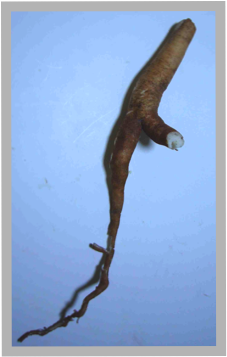
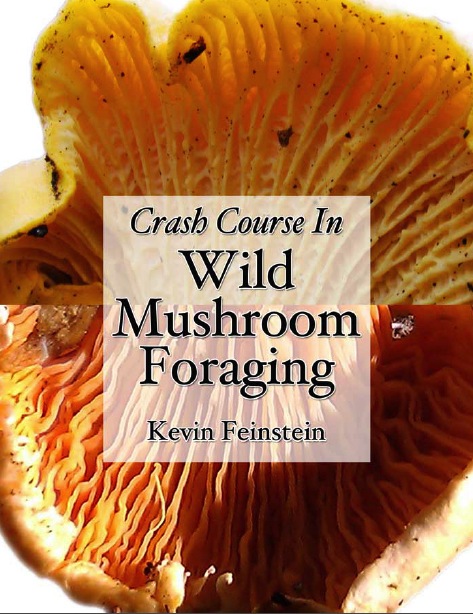


” food just does not come out of the ground in your suburban back yard. Even gardeners are viewed as a throwback and a tad strange. ”
Good observation – we’ve gotten somewhat used to being the “weird neighbors.” The ignorance of people on the production of food is simply staggering.
Great Article! Thanks, I cant wait to read “Crash Course in Wild Mushroom Foraging.” I know nothing of mushrooms colorful pictures sound like they are right up my alley.
Managed to collect some wonderful tasting Chickweed this week here in Texas. Yum!
Your mentioning of black walnuts and acorns with the nut cracker reminded me that I still have last fall’s walnuts and acorns sitting around in tubs needing to be cracked! I love the black walnuts’ taste, but it is too messy to crack them indoors in my crowded laboratory with a hammer, and the hammer doesn’t get out half the meat anyway. If I had a bit more time on my hands I would set outside and crack them one by one… but with the busy schedule of a mad scientist, I need to get one of them nut crackers!
On another note, next year I will be a college student, and I shall keep an eye out for the notorious Pthirus pubis while in college where it makes “80 percent of its real estate”… LOL!
Hi Deane,
I think that you will find more information on maslin techniques if you search “crops maslins”. A fascinating way to produce food.
Thanks for another great newsletter.
Brian
Wild touch-me-not, a.k.a. spotted jewel weed will stop the sting of nettles. Crush a few leaves in your hand and rub them on the affected area. It also helps heal poison oak, poison ivy and poison sumac rashes.
Thanks… but that never worked for me, even when I lived where there was some Jewelweed. In the last four decades or so nothing has worked so far to take the sting out except time.
Utrica Chamaedryoides is “Algurras ” in Arabic. A Jordanian friend of mine had a video showing how this stinging plant could defend another much looking like neigbouring – protected -plant (camoflague or mimicry) from an intruder – e,g, a human hand. “Keep me alive ,” so they say. A well known incident among my people is that of a frog stung by a scorpion. The frog , being familiar with its surroundings, immediately licked a leaf of a nearby specific plant;thus kept alive. I like the wisdom beyond the issue of the mother, her sons,dogs and the spurge nettle.Let me add what our Arabian poet said and afterwards became a saying. “Like camels in the desert, dying of thirst, yet water is carried on their backs.” Finally, from Sudan, the heart of Africa, to you, your colleagues,and all attending Florida Herbal Conference best wishes and all success.
Thank you! I just found one of those burning dwarfs in my garden/ weed bed and fingered it to get a better look in hopes of identifying it, but could not. Your description of the sting is quite accurate. I replanted it on my streetside where I am trying to deter curious pedestrians.